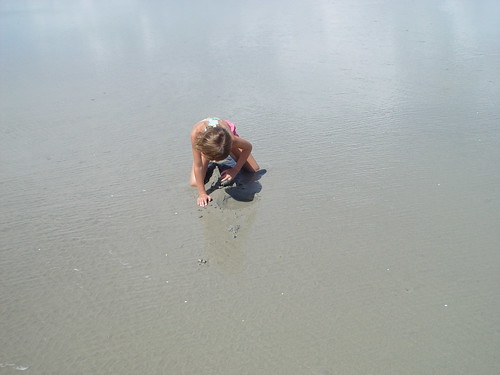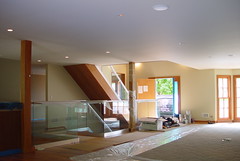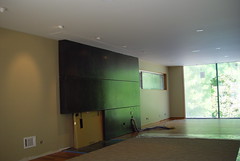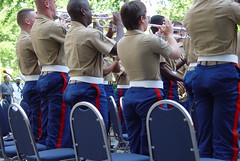Saturday, June 25, 2005
Small is the New Big
by Seth Godin
Big used to matter. Big meant economies of scale. (You never hear about “economies of tiny” do you?) People, usually guys, often ex-Marines, wanted to be CEO of a big company. The Fortune 500 is where people went to make… a fortune.
There was a good reason for this. Value was added in ways that big organizations were good at. Value was added with efficient manufacturing, widespread distribution and very large R&D staffs. Value came from hundreds of operators standing by and from nine-figure TV ad budgets. Value came from a huge sales force.
Of course, it’s not just big organizations that added value. Big planes were better than small ones, because they were faster and more efficient. Big buildings were better than small ones because they facilitated communications and used downtown land quite efficiently. Bigger computers could handle more simultaneous users, as well.
Get Big Fast was the motto for startups, because big companies can go public and get more access to capital and use that capital to get even bigger. Big accounting firms were the place to go to get audited if you were a big company, because a big accounting firm could be trusted. Big law firms were the place to find the right lawyer, because big law firms were a one-stop shop.
And then small happened.
Enron (big) got audited by Andersen (big) and failed (big.) The World Trade Center was a target. TV advertising is collapsing so fast you can hear it. American Airlines (big) is getting creamed by Jet Blue (think small). BoingBoing (four people) has a readership growing a hundred times faster than the New Yorker (hundreds of people).
Big computers are silly. They use lots of power and are not nearly as efficient as properly networked Dell boxes (at least that’s the way it works at Yahoo and Google). Big boom boxes are replaced by tiny ipod shuffles. (Yeah, I know big-screen tvs are the big thing. Can’t be right all the time).
I’m writing this on a laptop at a skateboard park… that added wifi for parents. Because they wanted to. It took them a few minutes and $50. No big meetings, corporate policies or feasibility studies. They just did it.
Today, little companies often make more money than big companies. Little churches grow faster than worldwide ones. Little jets are way faster (door to door) than big ones.
Today, Craigslist (18 employees) is the fourth most visited site according to some measures. They are partly owned by eBay (more than 4,000 employees) which hopes to stay in the same league, traffic-wise. They’re certainly not growing nearly as fast.
Small means the founder makes a far greater percentage of the customer interactions. Small means the founder is close to the decisions that matter and can make them, quickly.
Small is the new big because small gives you the flexibility to change the business model when your competition changes theirs.
Small means you can tell the truth on your blog.
Small means that you can answer email from your customers.
Small means that you will outsource the boring, low-impact stuff like manufacturing and shipping and billing and packing to others, while you keep the power because you invent the remarkable and tell stories to people who want to hear them.
A small law firm or accounting firm or ad agency is succeeding because they’re good, not because they’re big. So smart small companies are happy to hire them.
A small restaurant has an owner who greets you by name.
A small venture fund doesn’t have to fund big bad ideas in order to get capital doing work. They can make small investments in tiny companies with good (big) ideas.
A small church has a minister with the time to visit you in the hospital when you’re sick.
Is it better to be the head of Craigslist or the head of UPS?
Small is the new big only when the person running the small thinks big.
Don’t wait. Get small. Think big.
Big used to matter. Big meant economies of scale. (You never hear about “economies of tiny” do you?) People, usually guys, often ex-Marines, wanted to be CEO of a big company. The Fortune 500 is where people went to make… a fortune.
There was a good reason for this. Value was added in ways that big organizations were good at. Value was added with efficient manufacturing, widespread distribution and very large R&D staffs. Value came from hundreds of operators standing by and from nine-figure TV ad budgets. Value came from a huge sales force.
Of course, it’s not just big organizations that added value. Big planes were better than small ones, because they were faster and more efficient. Big buildings were better than small ones because they facilitated communications and used downtown land quite efficiently. Bigger computers could handle more simultaneous users, as well.
Get Big Fast was the motto for startups, because big companies can go public and get more access to capital and use that capital to get even bigger. Big accounting firms were the place to go to get audited if you were a big company, because a big accounting firm could be trusted. Big law firms were the place to find the right lawyer, because big law firms were a one-stop shop.
And then small happened.
Enron (big) got audited by Andersen (big) and failed (big.) The World Trade Center was a target. TV advertising is collapsing so fast you can hear it. American Airlines (big) is getting creamed by Jet Blue (think small). BoingBoing (four people) has a readership growing a hundred times faster than the New Yorker (hundreds of people).
Big computers are silly. They use lots of power and are not nearly as efficient as properly networked Dell boxes (at least that’s the way it works at Yahoo and Google). Big boom boxes are replaced by tiny ipod shuffles. (Yeah, I know big-screen tvs are the big thing. Can’t be right all the time).
I’m writing this on a laptop at a skateboard park… that added wifi for parents. Because they wanted to. It took them a few minutes and $50. No big meetings, corporate policies or feasibility studies. They just did it.
Today, little companies often make more money than big companies. Little churches grow faster than worldwide ones. Little jets are way faster (door to door) than big ones.
Today, Craigslist (18 employees) is the fourth most visited site according to some measures. They are partly owned by eBay (more than 4,000 employees) which hopes to stay in the same league, traffic-wise. They’re certainly not growing nearly as fast.
Small means the founder makes a far greater percentage of the customer interactions. Small means the founder is close to the decisions that matter and can make them, quickly.
Small is the new big because small gives you the flexibility to change the business model when your competition changes theirs.
Small means you can tell the truth on your blog.
Small means that you can answer email from your customers.
Small means that you will outsource the boring, low-impact stuff like manufacturing and shipping and billing and packing to others, while you keep the power because you invent the remarkable and tell stories to people who want to hear them.
A small law firm or accounting firm or ad agency is succeeding because they’re good, not because they’re big. So smart small companies are happy to hire them.
A small restaurant has an owner who greets you by name.
A small venture fund doesn’t have to fund big bad ideas in order to get capital doing work. They can make small investments in tiny companies with good (big) ideas.
A small church has a minister with the time to visit you in the hospital when you’re sick.
Is it better to be the head of Craigslist or the head of UPS?
Small is the new big only when the person running the small thinks big.
Don’t wait. Get small. Think big.
Friday, June 24, 2005
Friday, June 17, 2005
Threatened Closure of Cambridge University School of Architecture
By Peter Sparks
On Monday 29th November there were two thousand people trampling the forbidden grass outside the University of Cambridge Senate House. The University School of Architecture supported by the student union and all the faculty were protesting against the administrations recommendation that the School be closed. Television presenter of Restoration, Gryf Rees-Jones, theoretician Rowan Moore, head of the Sheffield School, Professor Jeremy Till, practitioner Sunand Prasad and the Cambridge Member of Parliament, Ann Campbell MP all spoke of the folly of the decision.
Cambridge's teaching is consistently the most highly rated of any school of architecture in Britain but two years ago the government rating of the research carried out by the members of staff dropped from 5 to 4 on the national scale of 1-5. Cambridge seems only to tolerate 5 and expects 5* though no school of architecture has ever been awarded the star because the research is assessed by non architects in a process that has been acknowledged, even by Cambridge, as totally flawed. Government funding immediately dropped 42% while the University gave the school a year by to show that it would get a 5* in 2008. Within nine months three times the previous amount of research had been published and research funding was up from £1.5m to £4m but the Review Committee struck three months early and recommended closure before hearing of the progress. Now the Universitys General Board will vote on Wednesday 8th December whether to close the Department finally.
There have been protests from all over the world that the Cambridge School , which, under Sir Leslie Martin at the 1958 Oxford Conference, virtually invented architectural research, should be closed for being found wanting after one meaningless assessment. Carlo Ratti from MIT expresses it well in the Times Higher Education Supplement: " As an alumnus I am appalled, not so much because of the loss of a world-class tradition represented by leading scholars, but the narrow mindedness. While Old Cambridge may be recklessly losing its assets the new Cambridge in Massachusetts is passionately debating the role design will play in the 21st century, with the growing need for interdisciplinary problem solving and the booming economy of the ˜creative classes." Anthony Gormley has a similarly telling and passionate article in the Guardian newspaper. There have been letters in papers from leading national and international academics and practitioners. Most Heads and Deans of most international schools have written to the Vice Chancellor of Cambridge University as have many of the design conscious public and politicians from all over the world but it seems to little effect.
Who suffers most? First and foremost the current students and those applying now for entry next year. At Cambridge University Architecture is the most sought after subject with easily the highest applicant to entrant ratio. As one correspondent pointed out it is like the bread queues in a totalitarian state. Everyone wants bread so you ensure a shortage.
Peter Sparks is an architect and a Fellow of Girton College, Cambridge. He
joined the Cambridge Department of Architecture in 1959, returning to teach
studios there for thirty years during which time he was a full time
University Lecturer 1979-1994. He is the alumni link for protest about the
proposed closure of the School but support from any and all is welcome at
pcjs2@cam.ac.uk.
On Monday 29th November there were two thousand people trampling the forbidden grass outside the University of Cambridge Senate House. The University School of Architecture supported by the student union and all the faculty were protesting against the administrations recommendation that the School be closed. Television presenter of Restoration, Gryf Rees-Jones, theoretician Rowan Moore, head of the Sheffield School, Professor Jeremy Till, practitioner Sunand Prasad and the Cambridge Member of Parliament, Ann Campbell MP all spoke of the folly of the decision.
Cambridge's teaching is consistently the most highly rated of any school of architecture in Britain but two years ago the government rating of the research carried out by the members of staff dropped from 5 to 4 on the national scale of 1-5. Cambridge seems only to tolerate 5 and expects 5* though no school of architecture has ever been awarded the star because the research is assessed by non architects in a process that has been acknowledged, even by Cambridge, as totally flawed. Government funding immediately dropped 42% while the University gave the school a year by to show that it would get a 5* in 2008. Within nine months three times the previous amount of research had been published and research funding was up from £1.5m to £4m but the Review Committee struck three months early and recommended closure before hearing of the progress. Now the Universitys General Board will vote on Wednesday 8th December whether to close the Department finally.
There have been protests from all over the world that the Cambridge School , which, under Sir Leslie Martin at the 1958 Oxford Conference, virtually invented architectural research, should be closed for being found wanting after one meaningless assessment. Carlo Ratti from MIT expresses it well in the Times Higher Education Supplement: " As an alumnus I am appalled, not so much because of the loss of a world-class tradition represented by leading scholars, but the narrow mindedness. While Old Cambridge may be recklessly losing its assets the new Cambridge in Massachusetts is passionately debating the role design will play in the 21st century, with the growing need for interdisciplinary problem solving and the booming economy of the ˜creative classes." Anthony Gormley has a similarly telling and passionate article in the Guardian newspaper. There have been letters in papers from leading national and international academics and practitioners. Most Heads and Deans of most international schools have written to the Vice Chancellor of Cambridge University as have many of the design conscious public and politicians from all over the world but it seems to little effect.
Who suffers most? First and foremost the current students and those applying now for entry next year. At Cambridge University Architecture is the most sought after subject with easily the highest applicant to entrant ratio. As one correspondent pointed out it is like the bread queues in a totalitarian state. Everyone wants bread so you ensure a shortage.
Peter Sparks is an architect and a Fellow of Girton College, Cambridge. He
joined the Cambridge Department of Architecture in 1959, returning to teach
studios there for thirty years during which time he was a full time
University Lecturer 1979-1994. He is the alumni link for protest about the
proposed closure of the School but support from any and all is welcome at
pcjs2@cam.ac.uk.
Saturday, June 11, 2005
Thursday, June 09, 2005
I Still Love Colony Square
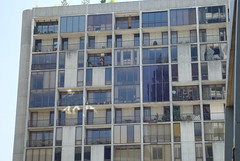
DSC05870
Originally uploaded by lightroomstudio.
It still seems progressive, even thirty years after it was built.
Saturday, June 04, 2005
Skycatcher takes shape
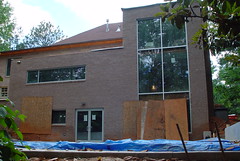
DSC05799
Originally uploaded by lightroomstudio.
The spaces are expressed with planes of glass. Behind the tower piece is the living room at the the top, the master besdroom.
Thursday, June 02, 2005
Mary Stanley Studio
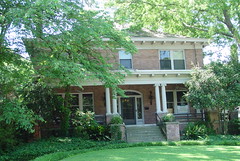
DSC05890
Originally uploaded by lightroomstudio.
We are working on a restoration of this gorgeous home in Ansley park for our dear friend. See the work of her artists at marystanleystudio.com.
One Peachtree Circle
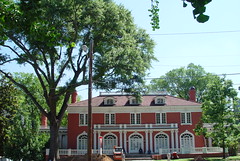
DSC05837
Originally uploaded by lightroomstudio.
Well the project is almost complete. I designed the renovation to this gorgeous 1914 home by Walter Downing, the designer of Oglethorpe, four years ago. The careful restoration has been done by Frank Gooden.
Wednesday, June 01, 2005
Boxing is cool. My brother challenged me to a boxing match....

DSC04709
Originally uploaded by lightroomstudio.
......as high school students looked on. Neither one of us was very good.
A Smulevich attacks Atlanta
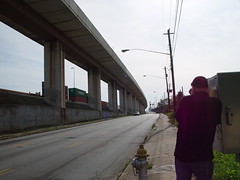
Smulevich attacks Atlanta
Originally uploaded by lightroomstudio.
Near Krog Street I was able to catch this shot of the Smulevich as he attacked the marta overpass.
Subscribe to:
Posts (Atom)


